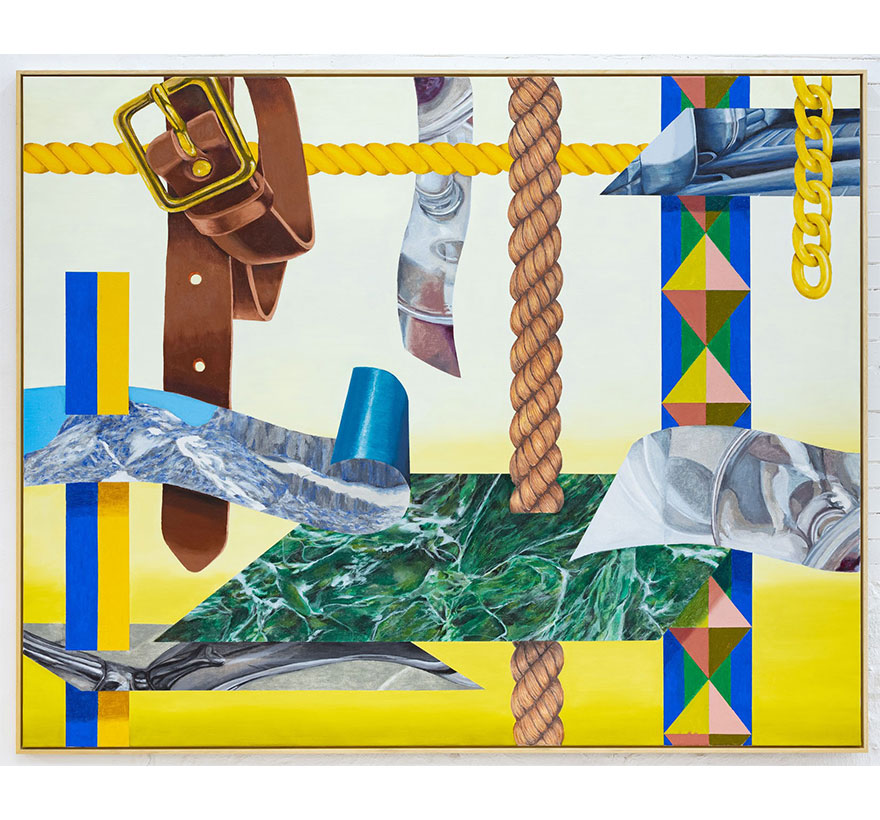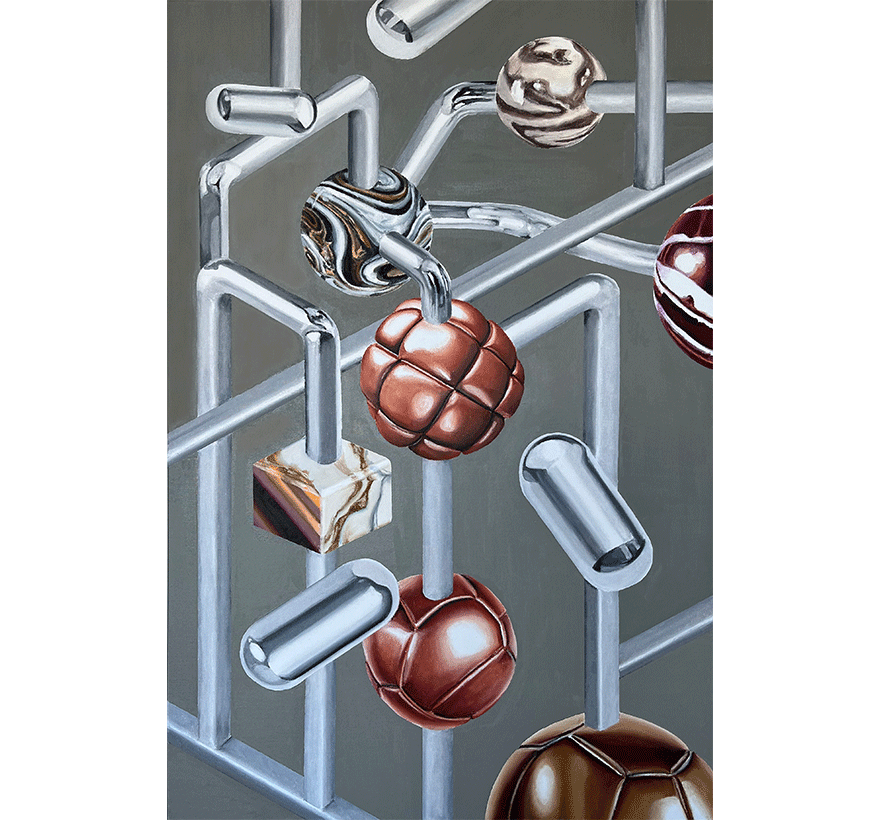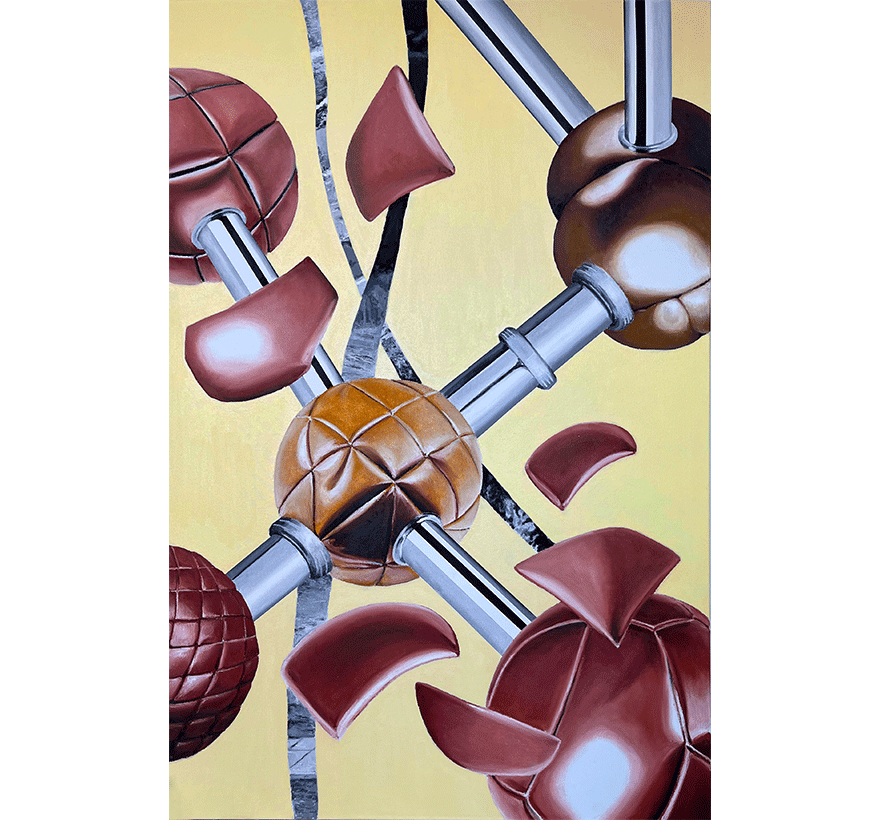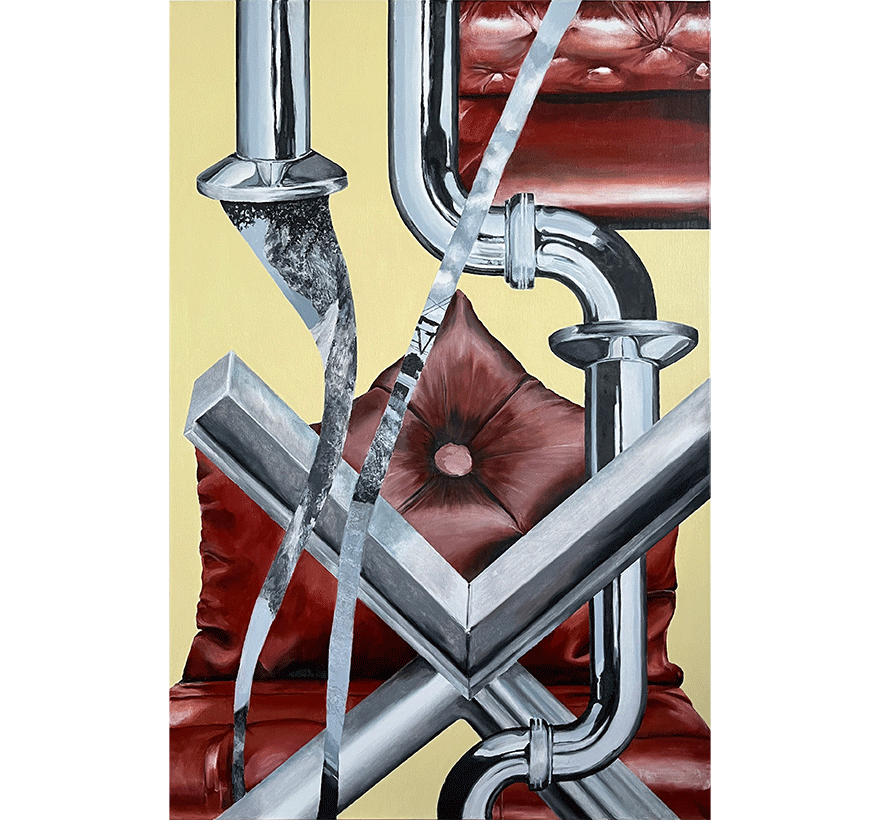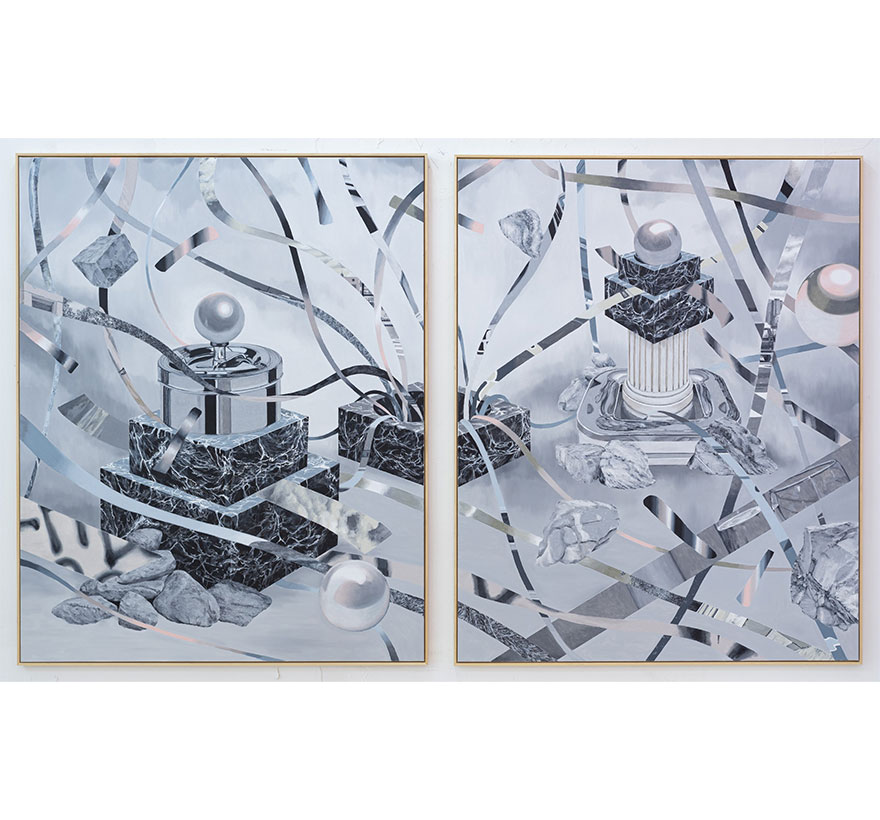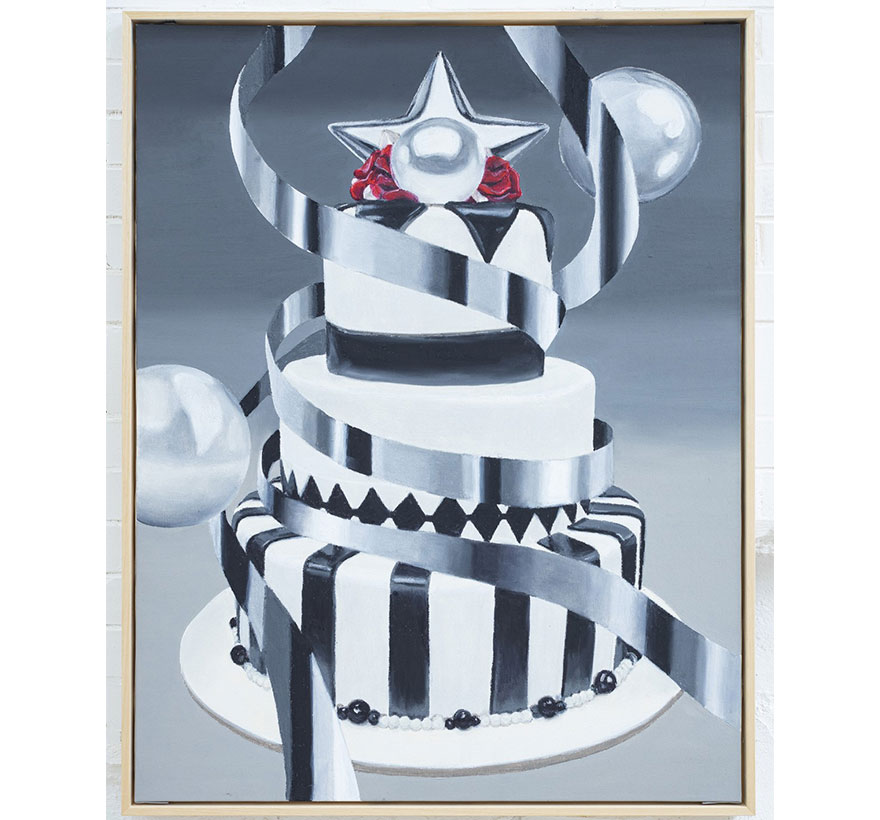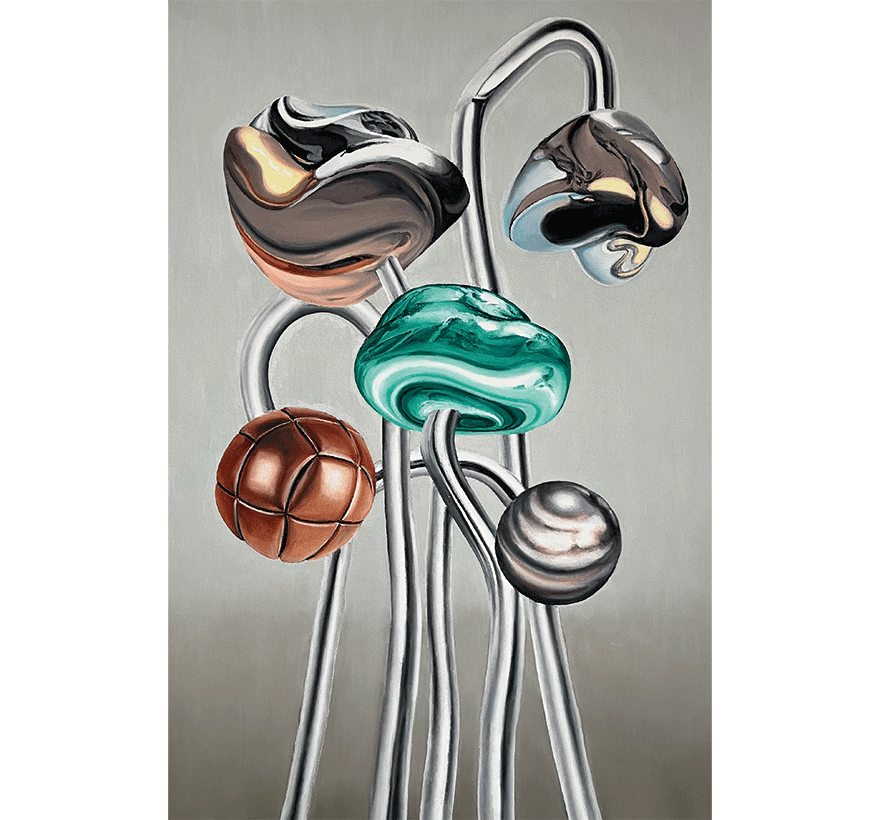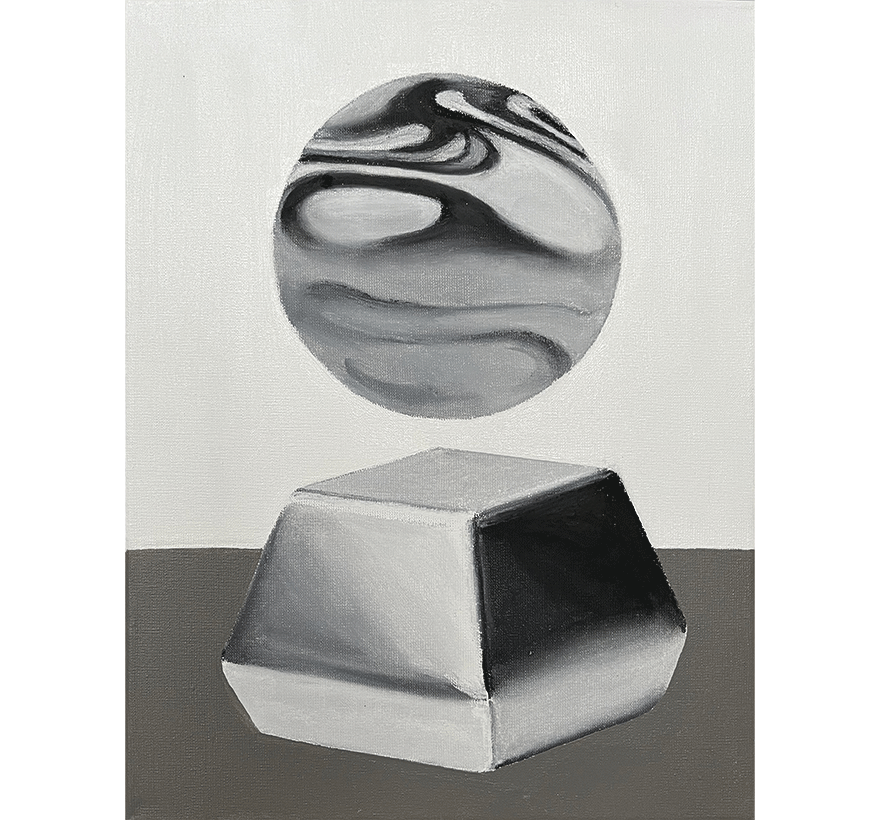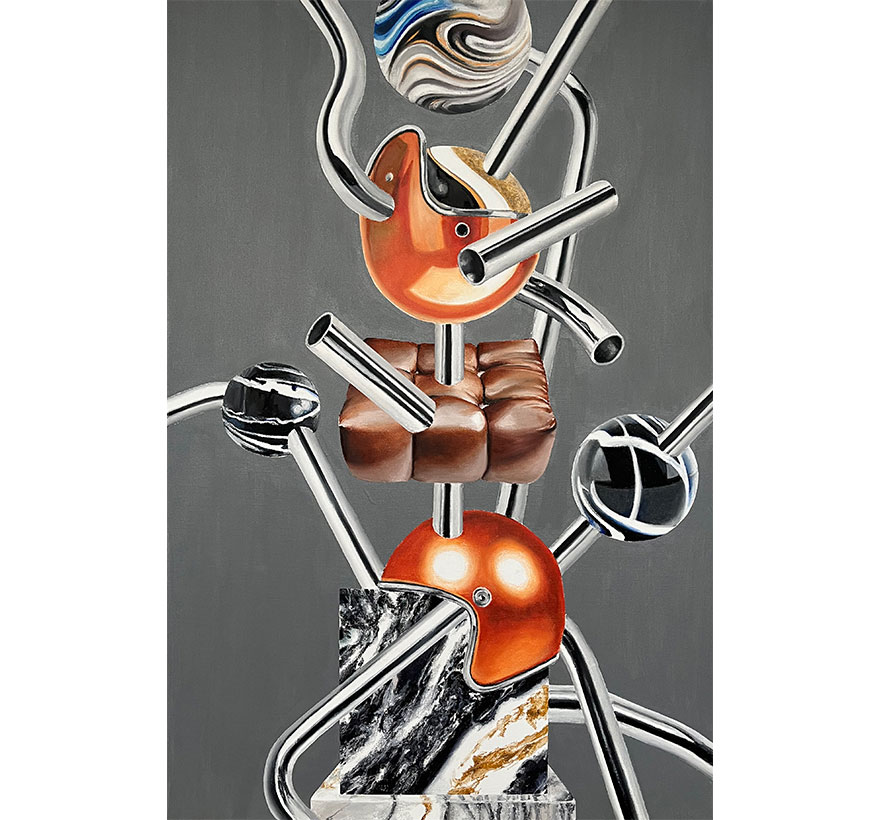Complete Compassion
Victor Lope Gallery is pleased to present ‘Complete Compassion’, the first exhibition in Spain by the multi-talented Amsterdam-based artist Paul du Bois-Reymond (Berlin, 1974). Coming from the world of graphic design, du Bois-Reymond studied at the Rietveld Academy of the arts and made his name with the famous design collectives DEPT and Machine, popular for their dazzling album covers. After several years of experimenting with drawing and gravure, it is through painting and particularly the use of oil pastels that the artist has found a new medium to develop his own formal language. Through it, neo-surrealist universes, extracted from and produced in the digital realm, are materially embodied. Starting from virtual images devoid of artistic aura, either internet captures, personal snapshots or objects generated by artificial intelligence, the artist collects, recomposes, and transfers these fragments to the surface of the canvas.
The exhibition ‘Complete Compassion’, reveals a group of recent works that source from the advertising and design world, depicting sumptuous, attractive, or luxurious objects. Leather pillows, pearls, chrome pills or marble balls – among other diverse elements – are animated and levitate in ethereal spaces, in a non-temporal reality. By shifting these objects from the digital domain to the pictorial frame, du Bois-Reymond modifies their nature, endowing them with physical qualities and elevating them to the status of unique, aesthetic entities, beyond ‘what is expected of them’. The use of oil for the base and oil pastels for the objects emphasises the textures and tonalities of the surfaces and gives them a satiny, a saturated density. Leather, marble or metal gleam boldly under a precise stroke despite crude nature of the oil pastels. The power of attraction of the compositions is intensified by the exaggerated scale of their representation. Sometimes isolated on small canvases, sometimes juxtaposed in large formats.
Paul du Bois-Reymond’s works confront the viewer with his own tastes, his own conditioning: why do we find these objects beautiful, is it influenced by the value that society confers on them, where does the attraction that emanates from them come from? By exaggerating the pleasure of looking at them, touching them or possessing them, Paul questions their authority and proposes a pop vision – not without irony – of our consumer society. Thus, leaving the viewer paradoxically astonished by the beauty of his captivating works.

